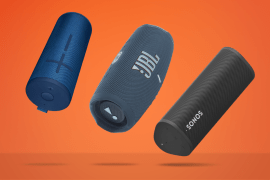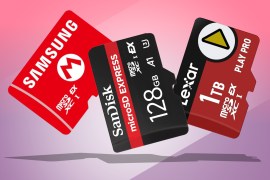The Legend of Zelda: Tears of the Kingdom review
How do you follow a game like Breath of the Wild? You're about to find out
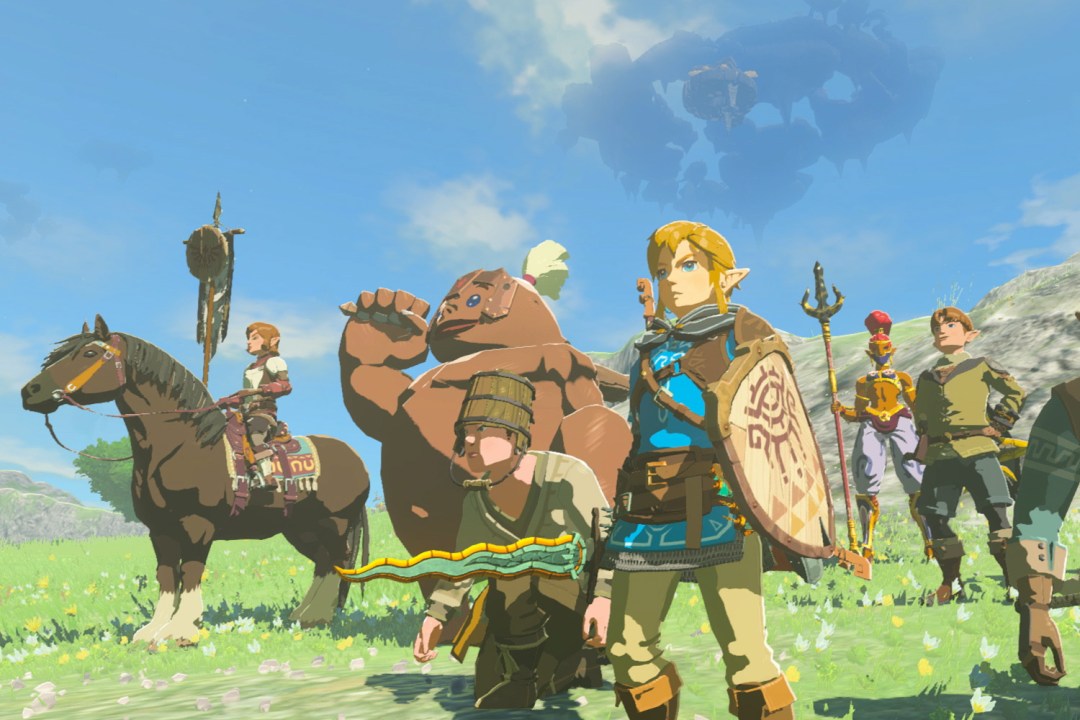
How do you follow a game like Breath of the Wild? It’s a question we’ve been grappling with since Nintendo first confirmed it was working on a sequel to its Switch console launch title that not only tore up the Legend of Zelda rulebook, but set a new gold standard for open-world game design, giving us a sprawling world so rich and with filled with secrets that players are still discovering new stuff in it over six years later.
Breath of the Wild was so good because it always rewarded curiosity, so with The Legend of Zelda: Tears of the Kingdom, Nintendo decided to lean even further into the idea of encouraging player experimentation.
You see, in Tears of the Kingdom, Link has a funky new arm with which he can make absurd hybrid weapons, makeshift planes and chaotic concrete tanks, leading to even more moments that feel entirely unique to your playthrough. You just have to use your imagination to get there. And rather than rebuilding or abandoning the enormous land of Hyrule that we’ve all come to know so well, Nintendo looked above and below for inspiration on how to make it feel fresh. The result is a game that is even grander and far more overwhelmingly enormous than its predecessor, but will it have the same impact?
Arm offensive
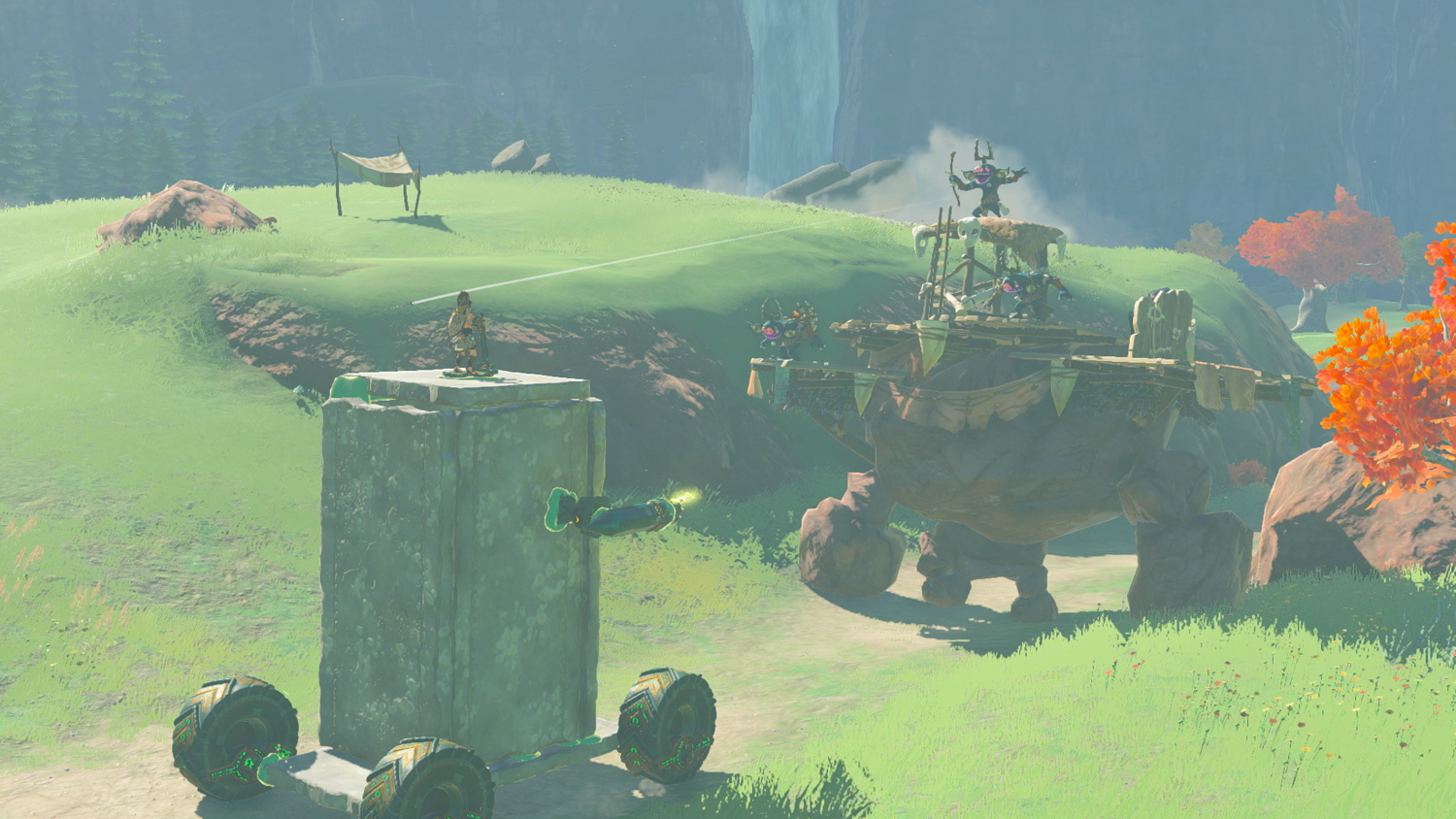
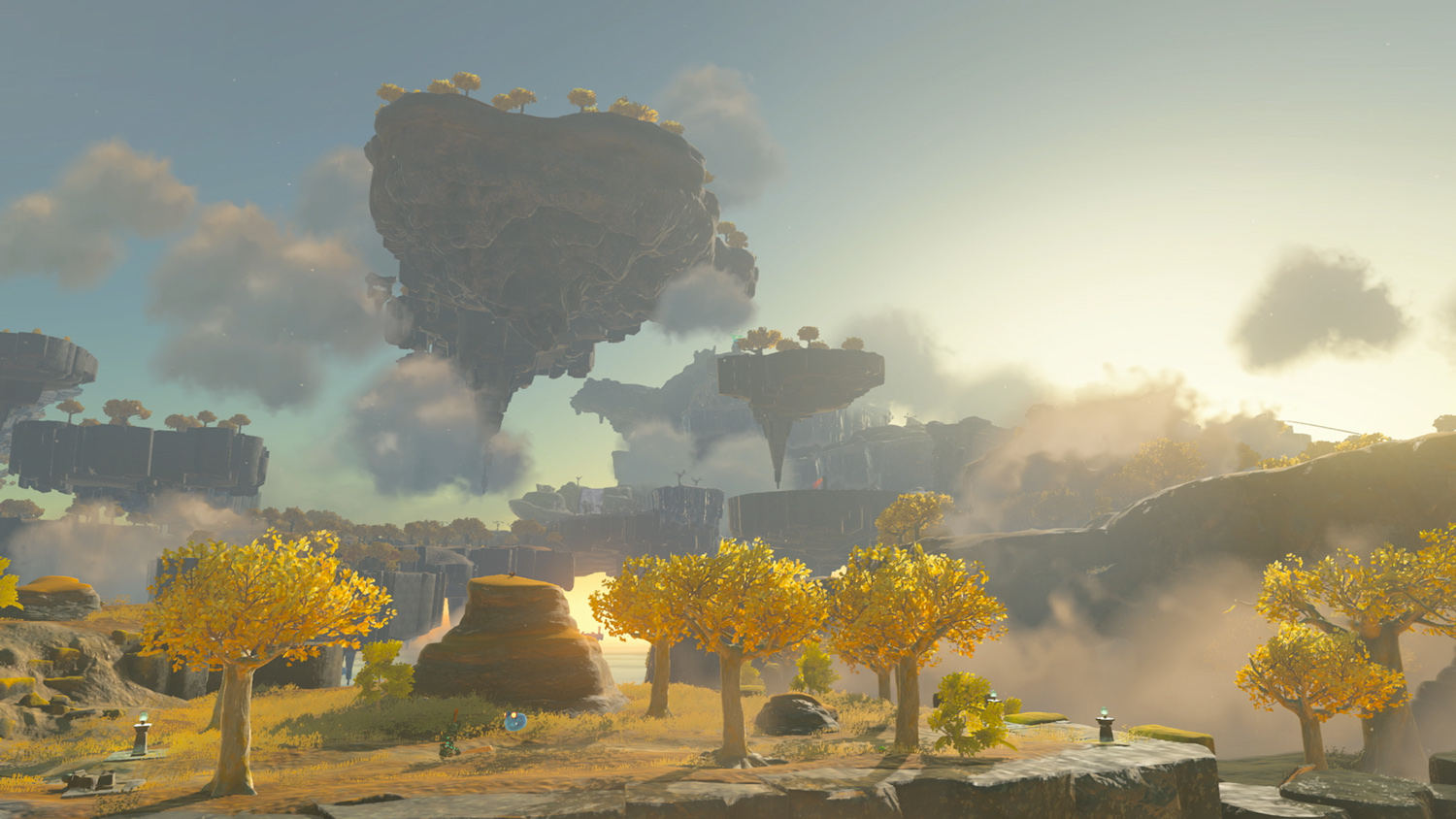
If you’ve played a Zelda game before, it won’t come as a surprise that all is not well in Hyrule. Despite Link slaying Ganon at the end of Breath of the Wild, it quickly becomes clear that evil is very literally bubbling away under the surface. Before long, Princess Zelda has vanished, our hero has lost his arm, and a supernatural event referred to by the locals as The Upheaval leads to a floating Hyrule Castle and the sudden appearance of islands in the sky.
But we’ll get to all that. For now, back to Link and his arm, or more importantly his new arm. And this arm is very much the star of the show, granting you four new abilities pretty much straight from the off. Just as Breath of the Wild wasn’t shy about letting you have at the Sheikah Slate’s toolset, Tears of the Kingdom wants you to be thinking immediately about how your shiny new augmented limb can be used to your advantage in every gameplay scenario.
Ultrahand is probably the one you’ll turn to the most often. Affectionately named after a 1960s Nintendo toy (yes the company is that old), it’s essentially a magic hand that allows you to grab and move objects around, and join them together with glowing superglue to make things. Fuse, meanwhile, allows you to combine your weapons, shields and arrows with nearly any item in your inventory to make either them more powerful or comically rubbish, depending on your mood. There are limitations – we sadly couldn’t, for example, combine a frog with a sword – and you can only fuse two objects at once, but the possibilities are endless.
You’ll quickly learn that arrows are far more effective when fused with a homing Keese Eyeball, a bomb or the sharp fang of a fallen enemy; that your boring old swords are more fun when they can throw fireballs, and that your shields can double as a single-use jetpack or skateboard when you strap a rocket or a cart to one. And that’s just the start.
The other two you’ll primarily use for traversal. Ascend lets you swim up through solid surfaces, including rock, allowing for quick exits from caves, while Recall allows you to rewind the trajectory of moving objects while you continue to move in real time. It’s a lot to get your head around at first, and the controls can be a bit fiddly, with some serious finger gymnastics required when playing in handheld mode, but it won’t be long before you approach each situation knowing exactly what you want to do.
While we’ve spent north of 40 hours with the game now, a set piece of our own making that occurred in the first few still stands out. Exploring the rolling hills of Central Hyrule for the first time, we came across a heavily guarded Bokoblin fort. As we approached the entrance, the tricky monsters rolled a spike ball down the ramp, knocking us backwards into the pile of exploding barrels we’d carefully walked around seconds earlier. Kaboom. Dead Link. Next time we knew what was coming, and used Recall on the ball to rewind it back up the ramp, crushing everything in its way.
When the next mob began rushing down, we used Ultrahand to lift the boulder back to its original starting position and let go, leaving ourselves just enough time to get out of the way and watch it the roll into the same exploding barrels that had decided our fate earlier, wiping out a whole crowd of enemies at once. Once inside, we took out a much tougher Boss Bokoblin by using Ultrahand again to drop more barrels on its head, picking off the remaining grunts with homing arrows we fused together and a long stick with a mushroom on the end. Call it a Mario tribute.
Up and down
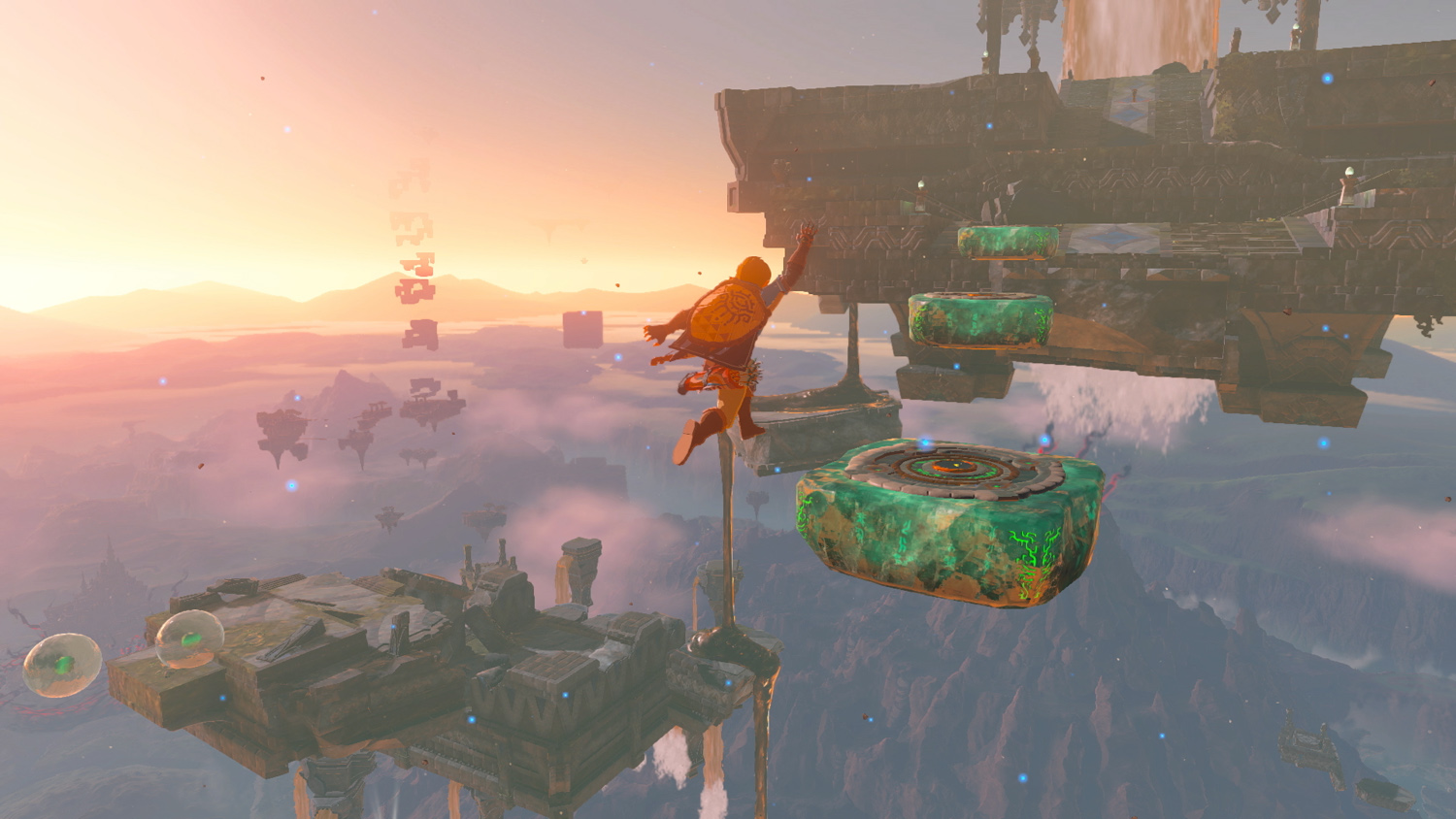
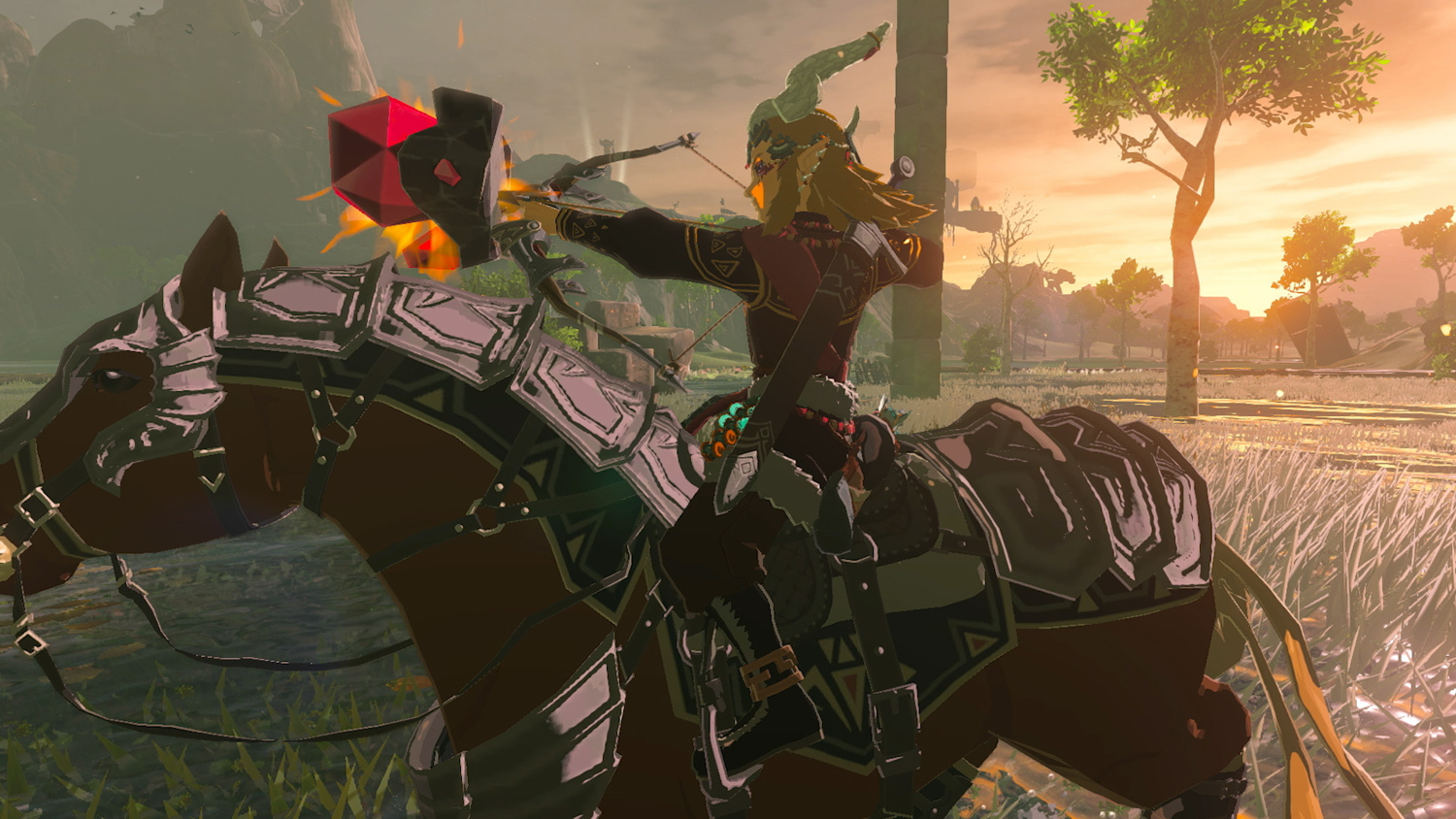
If you played Breath of the Wild, Hyrule and its various regions are broadly as you remember them, with a few new settlements and developments to existing ones. But in Tears of Kingdom you’ll only be spending part of your time on land. Post-Upheaval, the sky is decorated with explorable archipelagoes, the biggest of which being where Link’s latest adventure begins.
It’s on these islands that you first encounter the Constructs, robots created by an ancient Hyrule tribe called the Zonai, which plays a big role in the main story. Some of them are friendly, others very much aren’t, but they’re an integral addition to the game. You see, where there are Zonai Constructs, there are generally Zonai devices, objects you can use for building purposes. Before you’re allowed to leave the first collection of islands you’ll learn how to attach fans to logs to make a raft, wheels to wood to fashion a vehicle, and how to manage your energy cells, which determine how long an active Zonai device lasts before it needs recharging.
As you progress through the game you’ll acquire new Zonai devices from dispensers, such as steering wheels, hover pads, missiles, springs and hot air balloons. Smartly, the game doesn’t give you everything at once, and bigger vehicles burn through your available energy so quickly that you can’t easily fly across the entire map or tear through all of Hyrule in your DIY monster truck.
The best way to access new sky islands is by unlocking the towers that are scattered all over Hyrule. Our Hylian hero is also a daring skydiver now, you see, and when you access a new tower he’s shot right out of the roof, high into the sky, where he’s able to use his new Purah Pad tablet to scan both the ground regions and his immediate surroundings. Once that’s done, it’s up to you where you land. Initially we were a bit underwhelmed by the sky, with many of the archipelagos feeling a bit barren compared to the world below, even if the views are often magnificent. But it’s really worth exploring. There are new Zonai device dispensers to be found, chests to unearth, hidden shrines and some really fun minigames. It’s also a nice change of pace, soaring rather aimlessly between these mostly peaceful airborne islands, grabbing fruit from trees and gazing down at the gloom-strewn land beneath you.
And the sky is only half the story. Link is also able to parachute into large chasms in the ground and explore the pitch black depths of Hyrule, illuminating his path with fluorescent plant bulbs. Sometimes you’ll need to head down for main quest reasons, but you’re free to enter the Depths at any time to unearth more of the underground map’s secrets and gather up precious Zonai resources. We haven’t found it as alluring down there as the sky islands, with the oppressive darkness making it hard to get a proper grasp of the area, but you never know when you’re going to stumble upon some treasure worth finding.
Places to go, Rito to see
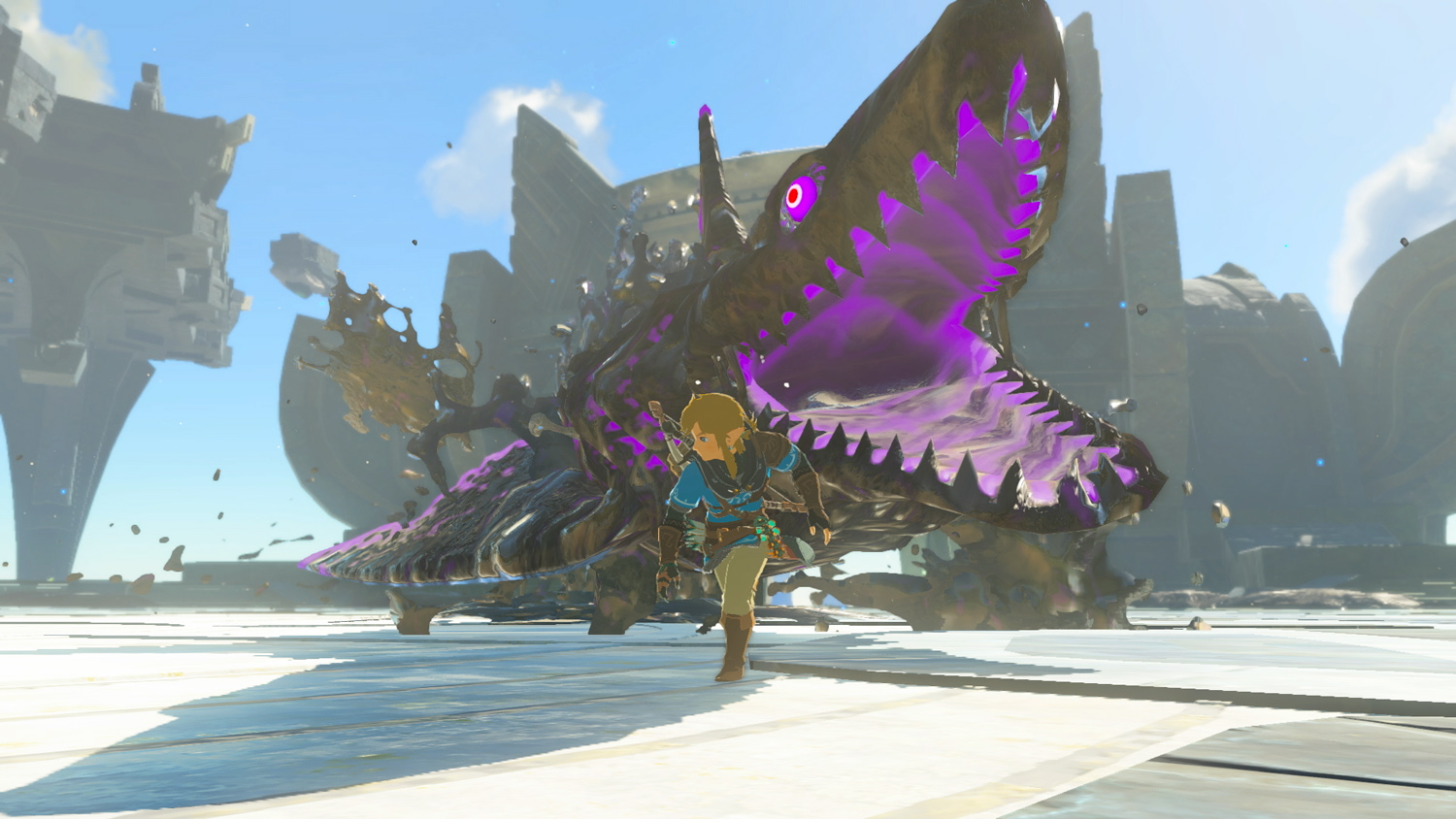
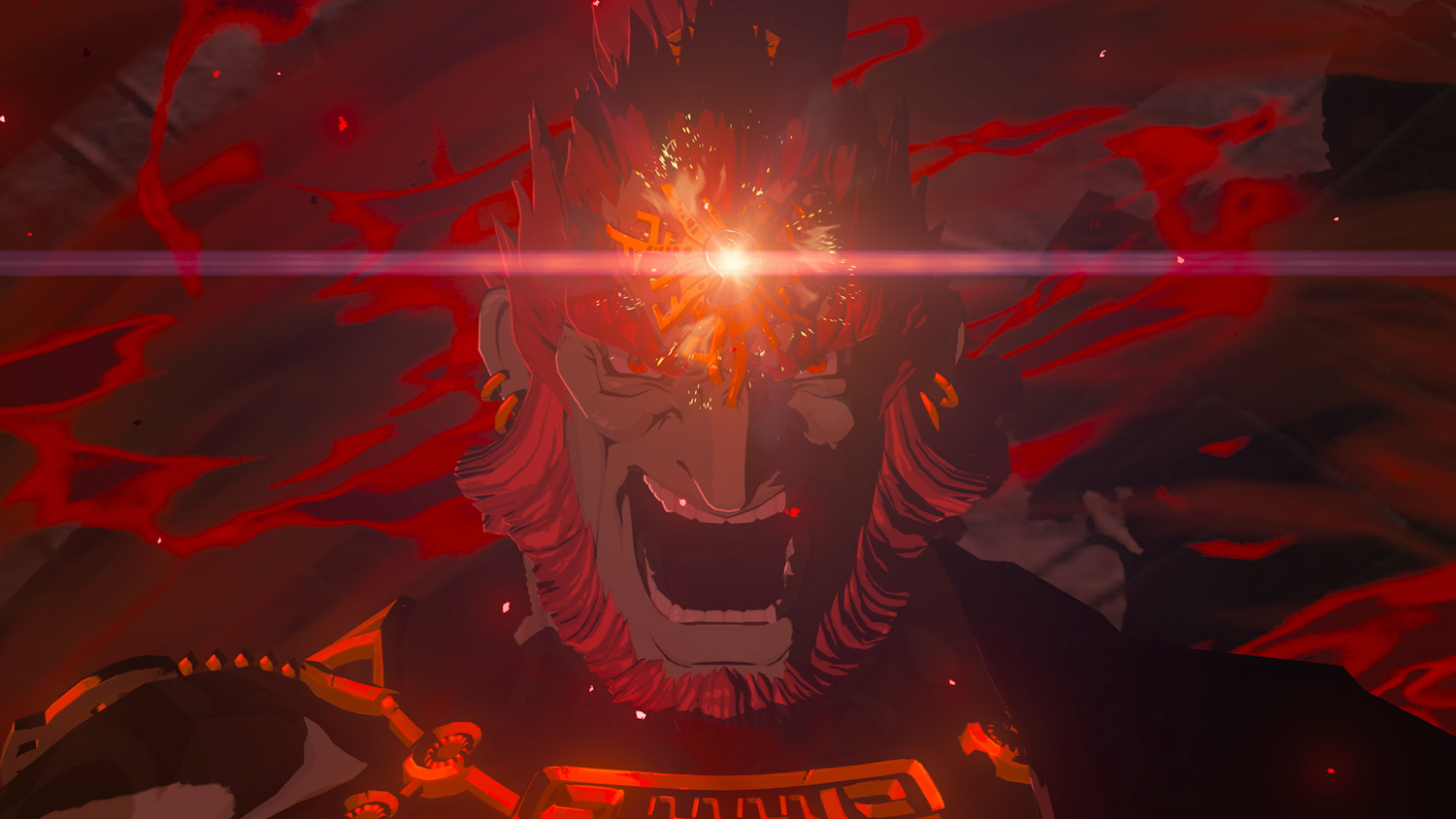
So Link is having lots of fun with his clever new arm and all the off-land tourism on offer, but there is inevitably some world-saving to be getting on with. We’ll keep it very light on story details, but what you need to know is this: Zelda has disappeared and needs to be found, and something is up with the environment.
Once you’ve leapt exhilaratingly off the first cluster of sky islands and touched land, you’ll soon learn that The Upheaval is causing big problems for the four corners of Hyrule, and that you should probably investigate, when you’re good and ready of course. This means reacquainting yourself with the different inhabitants of Hyrule in their respective home territories, and helping them deal with the strange phenomena. Structurally, then, the first major chunk of the main quest is notably very similar to Breath of the Wild’s, and even has you working with some of the same characters as before.
Detractors might call this retreading old ground, but when Nintendo has built a world as majestic as this one, one we’ve come to know so intimately over the years, it feels like returning home in the best way. Whether you’re scaling the flaming hot Death Mountain, surfing sparkling waterfalls in Zora’s Domain or gliding over the vast Gerudo Desert, very few games have such a strong sense of place.
Like in Breath of the Wild, helping to resolve each region’s woes earns you a new elemental power, which you get to keep for the rest of the game. By calling upon the Rito you gain a speed boost when gliding, for example, while the Goron spirit can smash into enemies and obstacles. With all four in tow Link becomes a bit of a one-Hylian army, but triggering them isn’t as simple as it should be, as you’ll need to be next to the spirit you need to use its power, and it’s too easy to summon the wrong one by accident.
There are dungeons, not too dissimilar in size and scope to the Divine Beasts in Breath of the Wild. Some Zelda purists bumped up against those, and in Tears of the Kingdom they’re a mixed bag, too. The journey to these colossal structures can be a real thrill; they make full use of the game’s emphasis on verticality, with some memorable platforming sections that take place high above the clouds, and another that sees you fighting a monster in the air before gliding into the mouth of a volcano.
But while they’re often spectacular places to behold, prevailing over the dungeons is usually a relatively simple affair, as they task you with using your arm abilities to solve their puzzles or simply break them. There are some nifty brain-teasers involving time manipulation for sure, and an intricate multi-floored desert temple is incredibly satisfying to overcome. But labyrinthian lock-and-key Zelda dungeon traditionalists may find themselves asking “is that it?” more than once, even if there are some thrilling (and one or two infuriating) boss battles awaiting you at the end of each one.
It’s your adventure
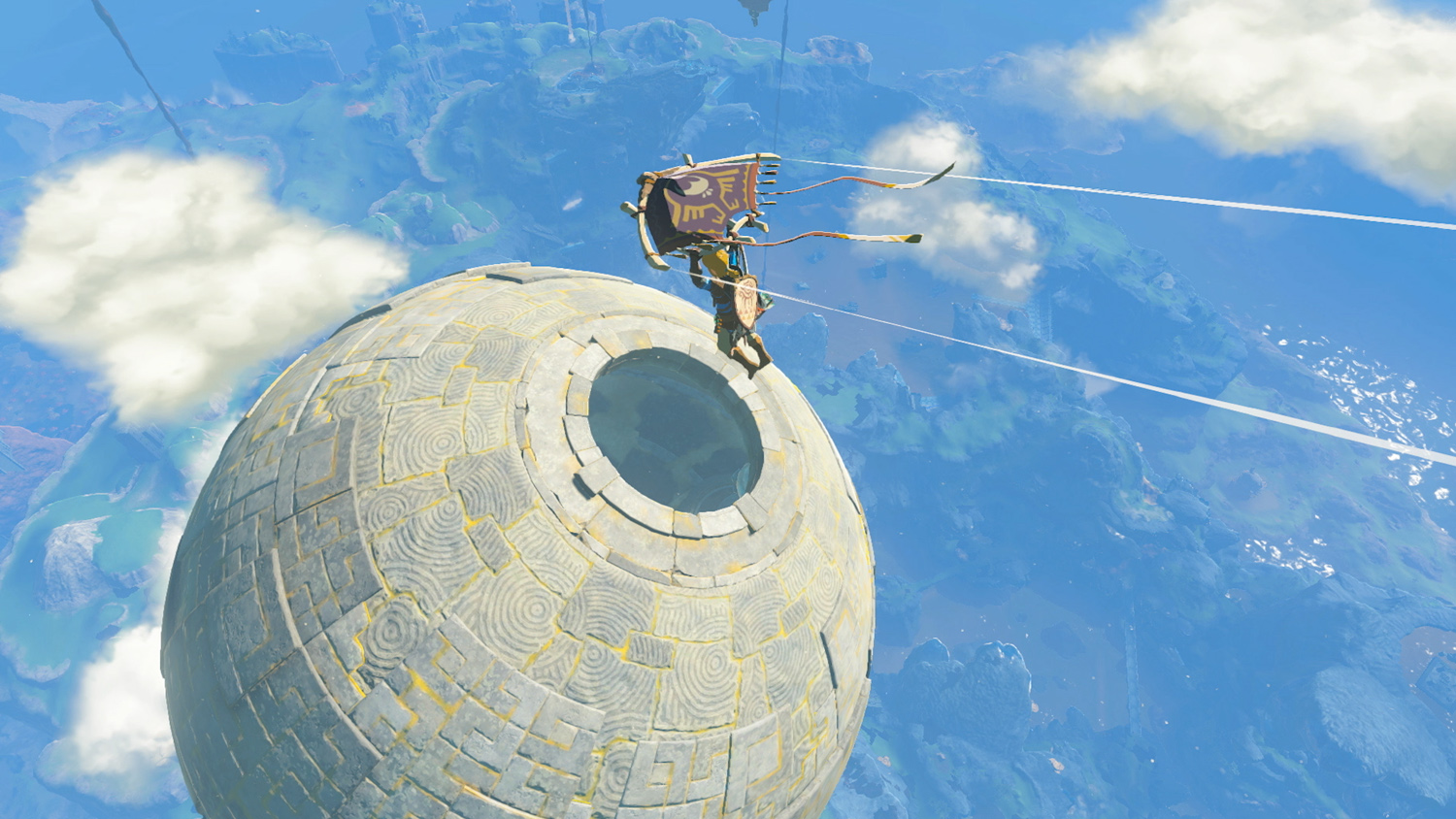
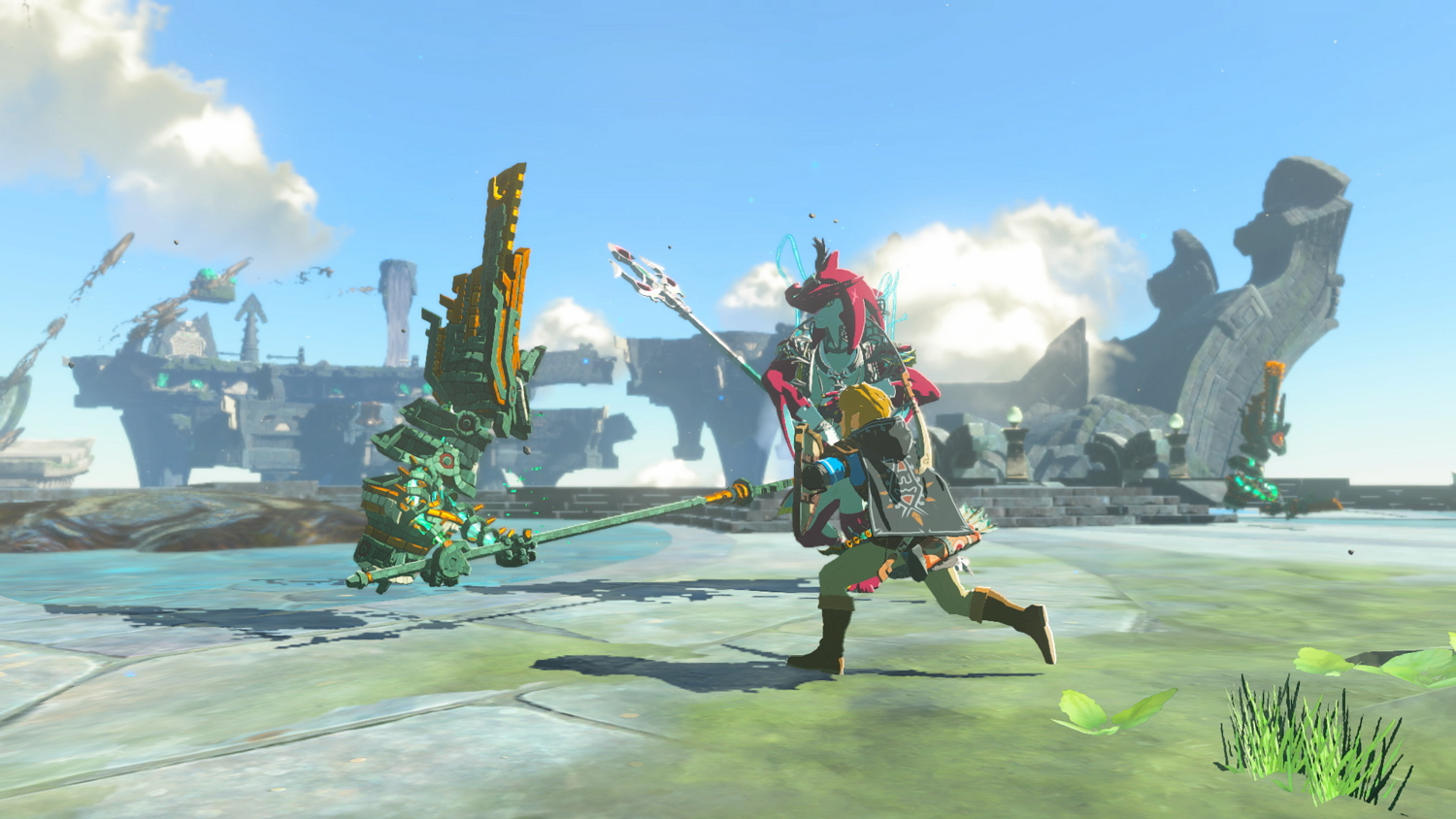
Despite the ever-present threat of evil, Tears of the Kingdom is just as remarkably hands-off as its predecessor. You can bulldoze your way through the main quest if you like, but the game is equally happy for you to spend tens of hours unlocking towers, gathering up side quests (do not ignore Penn the amiable journalist birdman), visiting stables, climbing mountains, tracking down fairy fountains, cooking meals and tackling the returning shrines – mini-dungeons of varying size and scope that are usually built around a specific gameplay mechanic. Some of them can be ticked off in a matter of minutes, others were so complex that we had to bow out in frustration.
Once again, even unraveling the mystery at the heart of the story is kind of optional, with cutscenes unlocked by visiting huge geoglyphs spread across Hyrule. You’ll usually spot these when in the air, and we found tracking them down decidedly more compelling and less tedious than the photography-based equivalent in the previous game. It’s really worth doing if you want to understand exactly what Zelda has been up to in her absence.
Most of the time you can largely ignore all the building and crafting too if it doesn’t interest you, though trust us when we say that at the very least you should get to know your way around a Zonai fan. Exploring Hyrule on horseback is great, but nowhere near as funny as doing it in a fire breathing carriage of destruction with a few rockets on the back in case things get hairy.
A quick word on the game’s performance. On the whole we weren’t too fussed by the 30fps-ness of it all, and while the Switch can definitely start to creak when things get really busy on screen, it never became anything close to game-ruining. As for the visuals, while Tears of the Kingdom’s lush watercolour painting-like art style does a good job of hiding the low resolution, and Hyrule can still look absolutely stunning at times, we noticed muddy textures and a general lack of detail in some outside areas more than we did in 2017, especially when blown up on a TV. A replay on a beefed up eventual Nintendo Switch successor will surely one day be in order.
The Legend of Zelda: Tears of the Kingdom verdict
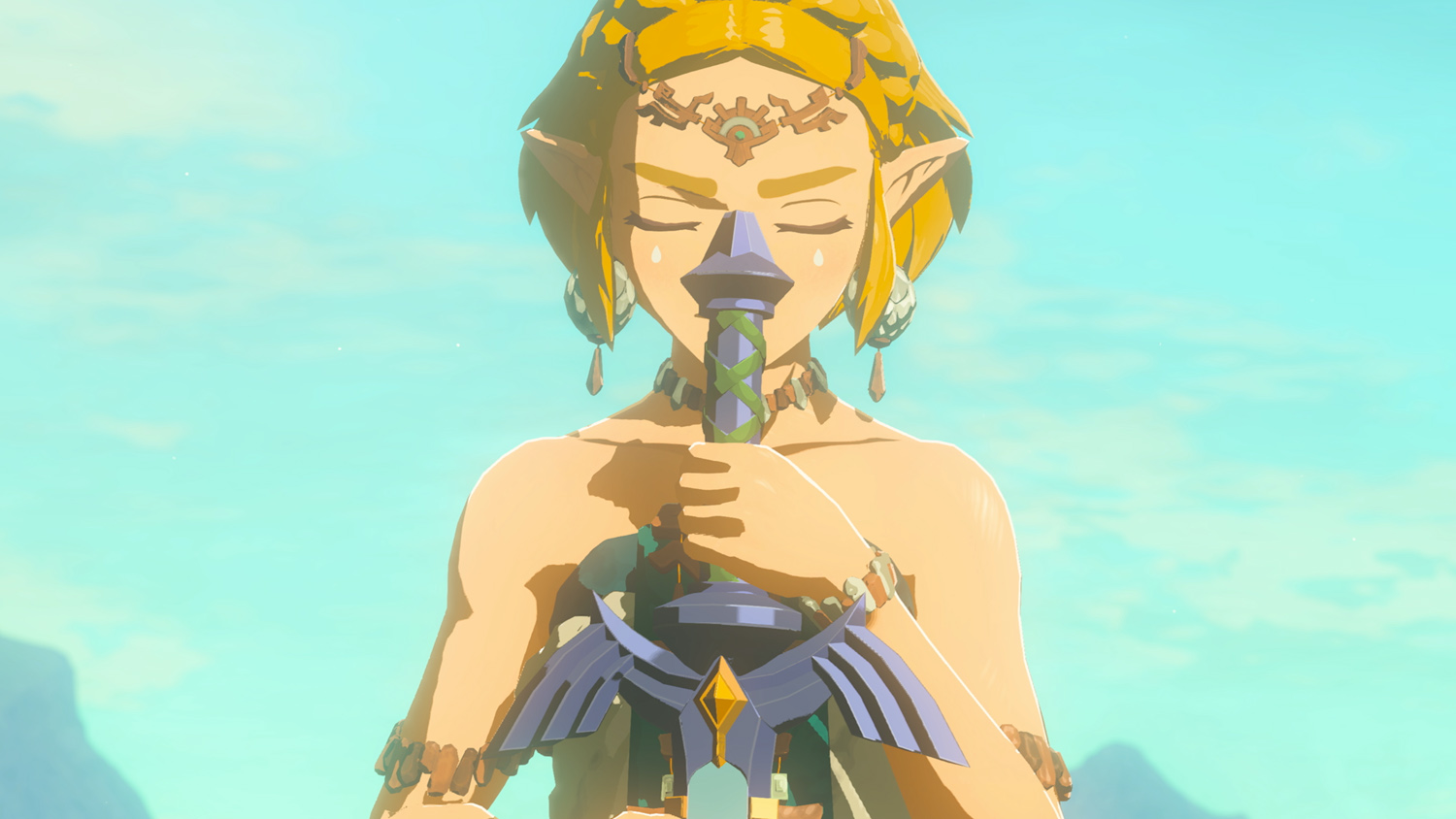
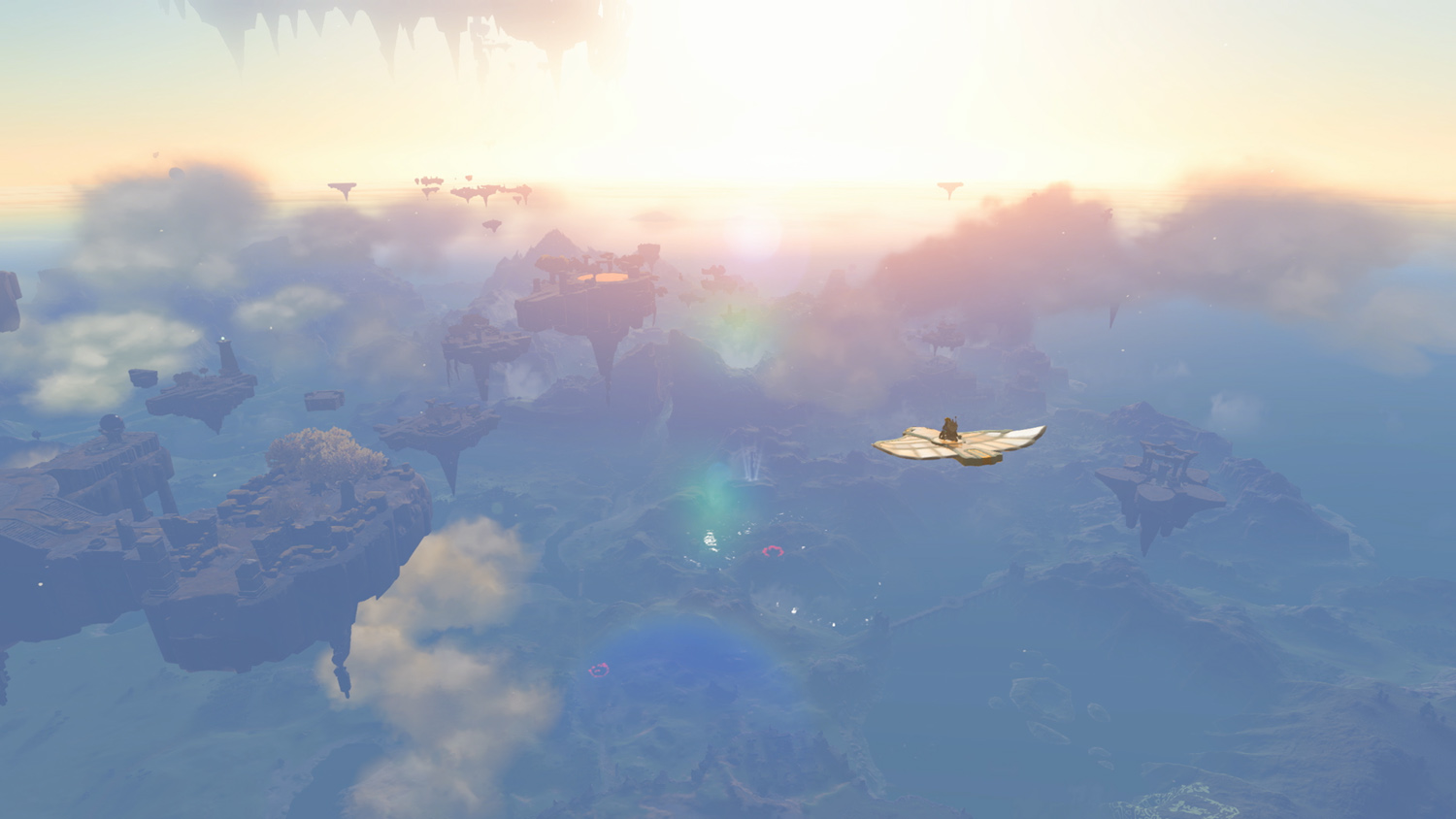
With Breath of the Wild, Nintendo completely reinvented one of its most beloved series’, a big swing that it was presumably pretty confident would pay off. What it perhaps didn’t expect was the community that would grow out of the game and is still to this day devoted to pushing it to its limits. Tears of the Kingdom is what happens when Nintendo embraces this mayhem. We fully expect to be seeing bizarre new weapon combinations and inventions pop up on the internet for months to come, and even as we approach the 50-hour mark, we’re convinced that we’ve barely scratched the surface. Or the sky for that matter.
It’s not a perfect game. Old-school dungeon lovers might be left wanting, and some surprisingly inelegant control choices sometimes get in the way of the fun. Oh, and it still rains too much in Hyrule. But if you lost countless hours to the Breath of the Wild, prepare for a big old dose of same again. Only this time there’s a world above for Link to conquer, too, with his trusty mushroom stick sheathed and ready to go.
Stuff Says…
An astonishing open world adventure that challenges you to think creatively at every turn
Pros
Endlessly fun new crafting features
Exploring the sky feels fantastic
A compelling mystery to untangle
Cons
The controls aren’t always intuitive
The Switch is starting to show its age
A few boss fights feel unfair

